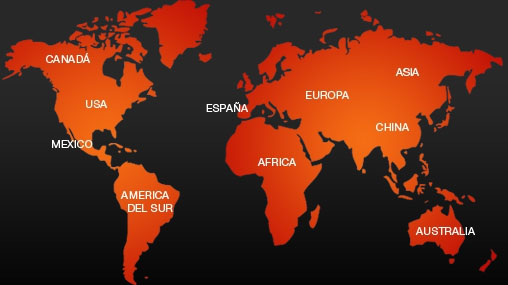- Inicio Acerca de RM Minerales
- Galería de fotos Blog RM Contacto
- Microscopia e instrumentos Pedidos Aviso legal
Copyright 2010-2025
www.rosellminerals.com



Estético grupo de cristales de vesuvianita, muy brillantes, con prismas estriados truncados por caras pinacoidales. Se disponen de forma muy aérea sobre la matriz con grosularia. De una localidad española conocida por sus minerales de skarn (skarnoide). Se han hecho prospecciones en la zona para investigar las posibilidades de explotación del tungsteno (scheelita).
Cristal de buen tamaño de heliodoro. Con un color amarillo verdoso, transparente a translúcido, con algunas caras, algunas redondeadas y otras más definidas. Una gema con etiqueta manuscrita antigua de Lloid, de Hortensia Durán y Marçal Llòria (Barcelona). La foto no hace justicia...
Grupo de cristales de cianita, de calidad gema, con transparencia y cuando la luz los atraviesa ofrecen un color excepcional. Se acompañan en la matriz con cristales de estaurolita de color marrón. Destacan sobre una matriz clara esquistosa con paragonita (una mica de Na). Una pieza europea de calidad difícil de ver hoy día. Material clásico y estético de esta famosa localidad suiza de la colección E. Nicolau (Barcelona).
La dresserita es un raro hidroxicarbonato de bario y aluminio y sólo se encuentra en la localidad tipo: la Francon Quarry en Montreal, Canadá. La cantera, ahora desaparecida, se encontraba literalmente en el medio de la ciudad, pero cerró definitivamente en 1981. Este gran ejemplar que ofrecemos presenta varias pequeñas esferas blancas, formadas por cristales radiales de dresserita, asociadas con pequeños cristales melados de weloganita, en una matriz con calcita. También podemos observar cristales de hidrodresserita, una especie más hidratada que la dresserita. La hidrodresserita forma cristales más gruesos, lo que da como resultado esferas más rugosas que la dresserita.
Estos ejemplares de adamita son de los más estéticos que esta clásica mina mexicana nos ha ofrecido. Agregados botroidales de adamita cuprífera, brillantes y formando también gavillas. Bajo la luz ultravioleta presentan una fluorescencia verde excepcional. Hoy día cuesta encontrar especímenes con esta calidad.
Pesado ejemplar de antimonio nativo, con brillo metálico, intenso, con bandeados internos de estibnita. Se acompaña en la zona de oxidación de estibiconita y valentinita de colores amarillentos. Excelente ejemplar para coleccionistas de elementos nativos. Una rareza.


Excelente ejemplar formado por un nutrido grupo de cristales prismáticos de cerusita totalmente recubiertos por cristales de smithsonita, romboédricos y muy brillantes. Se trata de una pieza muy diferente a lo que se puede ver de esta clásica localidad marroquí. Un ejemplar de vitrina.
Cristal de franklinita, Zn²⁺Fe³⁺₂O₄, de muy buen tamaño, con caras y aristas definidas, por la parte posterior de halla fragmentado. Se dispone de forma muy aérea sobre una matriz de calcita, con otros cristales de franklinita de menor tamaño, junto con willemita y zincita.
Enorme cristal de pleonasto, una variedad de espinela que contiene Fe²⁺; muestra formas cristalinas complejas del octaedro y combinaciones del octaedro con el dodecaedro o, más raramente, con las del cubo. Una pieza de tamaño museo, muy rara de ver.
Vetas de color naranja de huanghoita-(Ce), de grano muy fino y asociadas a otros carbonatos de tierras raras como sinquisita-(Ce) y Röntgenita-(Ce), junto con aegirina de tonos verdosos. Una rareza difícil de encontrar. Bayan Obo es el depósito de tierras raras (REE) más grande del mundo. Curiosamente el contenido de fluorita de los menas también lo convierte en el depósito de fluorita más grande del mundo. Hay que pensar que el depósito de Bayan Obo tiene 18 km de largo y 3 km de ancho, cubriendo una superficie total de 48 km². El depósito se compone de tres yacimientos principales a cielo abierto.
Grupo de cristales de quintinita (politipo quintinita-2H, Mg₄Al₂(OH)₁₂(CO₃)·₃H₂O) de color naranja que se disponen sobre una matriz con strontianita. Muy rara especie perteneciente al supergrupo hidrotalcita.
Cristal de pirssonita, un raro carbonato de calcio y sodio, definido y flotante. Como suele pasar presenta eflorescencias blanquecinas en la superfície. Un carbonato muy poco habitual procedente de la localidad tipo en Searles Lake, un gran lago seco de casi 20 km, en el desierto de Mojave. En su costa occidental se encuentra la comunidad minera de Trona. El bórax se extrae desde 1873. Hoy en día también se producen sulfato de sodio, carbonato de sodio y cloruro de sodio (halita).
La strüverita es una variedad de rutilo rica en tántalo y hierro, de formula (Ti,Ta,Fe)O₂, con proporciones variables de niobio (Nb). Cuando la proporción de Ta>Nb se le llama strüverita, pero si Nb≥Ta la variedad se ha nombrado como ilmenorutilo. Los ejemplares procedentes de esta localidad en MAdagascar se ha determinado que son de la variedad rica en Ta: strüverita. Un interesante ejemplar con una química muy especial.


Muy buen ejemplar de joaquinita-(Ce) de esta clásica mina norteamericana. En la matriz de crossita (nombre obsoleto de un anfíbol intermedio entre el grupo riebeckita y el grupo glaucofana) podemos ver dos cristales de joaquinita-(Ce), una especie rara de fórmula: NaBa₂Ce₂FeTi₂[Si₄O₁₂]₂O₂(OH,F)·H₂O. Destacan por su perfección, con intenso color naranja, translúcido, con caras y aristas definidas, y buen tamaño para la especie. Muy raros en el mercado con esta calidad.
Clásico y elegante ejemplar de Berbes, con cristales de barita en forma de libro, de color blanco amarillento, sobre los que destacan diversos agregados de cristales cúbicos de fluorita, muy transparentes y con brillo que nos permiten ver una zonación de color violeta. En la parte posterior poodemos ver una etiqueta adherida manuscrita.
Grupo de cristales prismáticos de arfvedsonita, de crecimiento paralelo, con las caras estriadas y terminaciones policristalinas, muy brillantes y de color verde oscuro, casi negro. Acompañado de feldespato como matriz.


Grupo de cristales prismáticos de arfvedsonita, con crecimiento paralelo, caras estriadas y terminaciones policristalinas, brillantes y de color verde oscuro, casi negro. Se hallan parcialmente recubiertos de feldespato. Un ejemplar curioso...


Grupo de cristales prismáticos de arfvedsonita, con crecimiento paralelo, uno de ellos muy elongado, caras estriadas y terminaciones policristalinas, brillantes y de color verde oscuro, casi negro, en matriz de feldespato.
Grupo de cristales prismáticos de arfvedsonita, con crecimiento paralelo, caras estriadas y terminaciones policristalinas, brillantes y de color verde oscuro, casi negro. Sobre una matriz de feldespato.


Grupo de cristales prismáticos de arfvedsonita, con crecimiento paralelo, caras estriadas y terminaciones policristalinas, brillantes y de color verde oscuro, casi negro. Sobre una matriz de feldespato.
Agregados rosados de aluminotaipingita-(CeCa) sobre matriz. Se han analizado y se enviarán los resultados al comprador. Montoso es una de las zonas donde se extrae la "Pietra di Luserna" o "Piedra de Luserna", un ortogneis leucogranítico caracterizado por una textura micro-"Augen" y un color gris verdoso o localmente azul pálido.
Agregado de cristales fibrosos a aciculares de esta rara sulfosal de arsénico y plomo de la cual Lengenbach es la localidad tipo. Se acompaña de cristales rojos de rejalgar, en una matriz de dolomíta sacaraoide. Se acompaña de pirita y esfalerita. Varias etiquetas muestran el pedigrí de la pieza, con una fecha de 1988.
Crecimiento laminar de plomo intersticial, la matriz es epidotita, una roca metamórfica poco común, formada casi exclusivamente de epidota cristalina. El ejemplar procede de una localidad sueca, clásica para el plomo, pero que no debe confundirse con el más conocida de Långban.
Aunque no se trata de un ejemplar estético en el sentido convencional, este metacinabrio es una pieza muy interesante y poco habitual a la venta. Procede de la mina Pietrineri, una mina de mercurio englobada en el famoso complejo de minerales de mercurio de Monte Amiata, actualmente completamente abandonado. Las operaciones mineras en Pietrineri comenzaron en 1902 i cesaron en 1979. En el espécimen podemos ver el vermellón del cinabrio junto con agregados negros de metacinabrio.
Los ejemplares de clinohumita de la sierra de Mijas son un clásico de la mineralogía española. Estos ejemplares son tratados mediante procesos químicos para hacer emerger los cristales en la matriz de mármol. Se acompañan de cristales octaédricos de color violeta oscuro de espinela. La clinohumita es un miembro del grupo de las humitas. Forma una serie continua con la hidroxiclinohumita. El nombre "clinohumita" se ha utilizado comúnmente cuando no se ha determinado la relación F/OH. Mijas es un skarn de magnesio enclavado en mármol y gneis pelíticos, anfibolitas y gneis granulíticos, en la zona de contacto con peridotitas-serpentinitas alpinas (sierra de Mijas).
